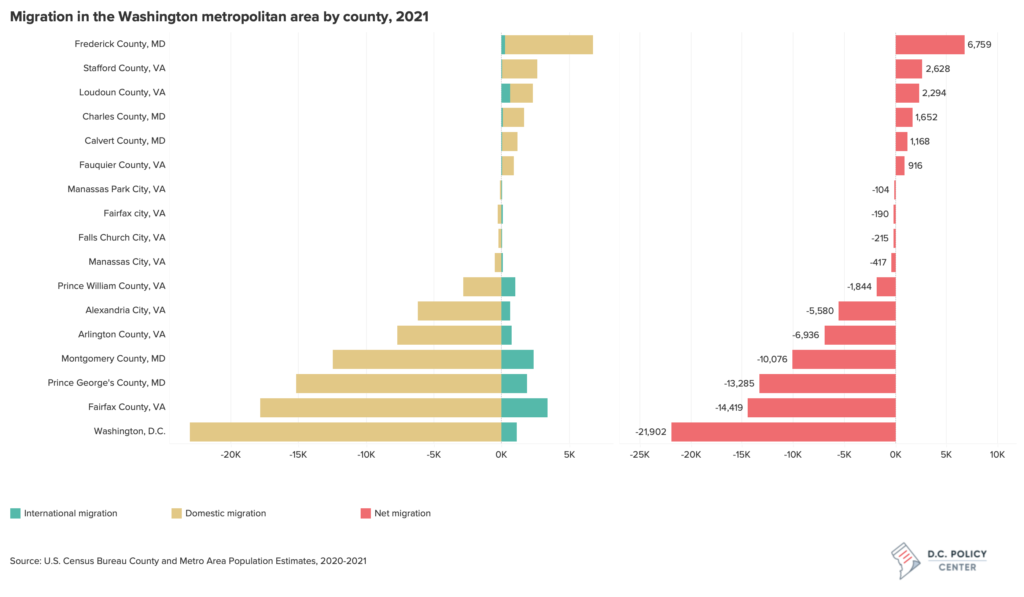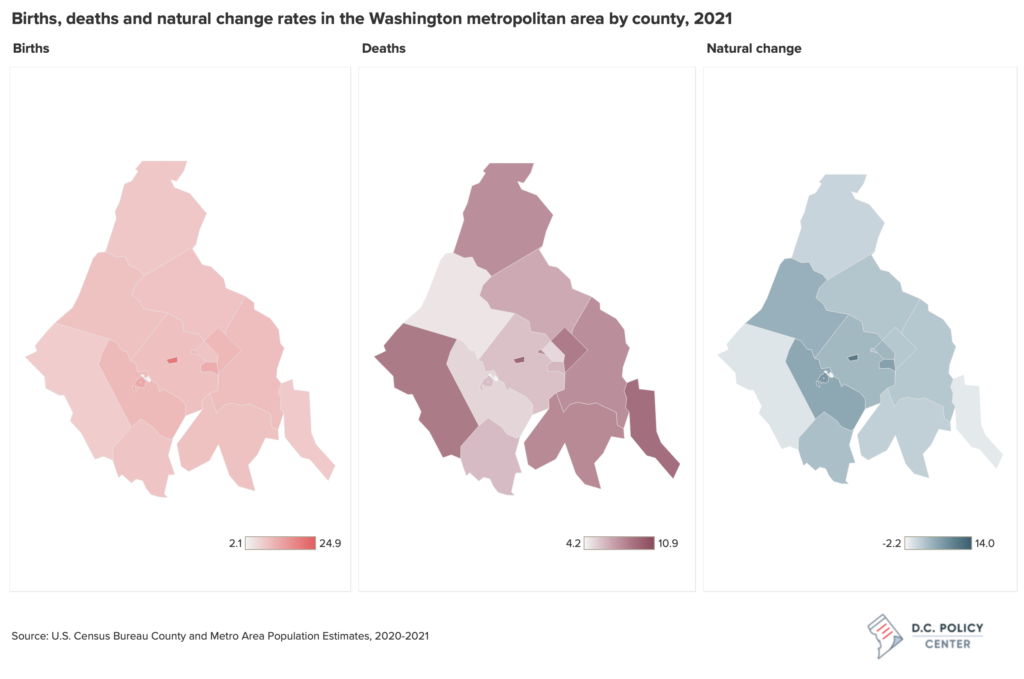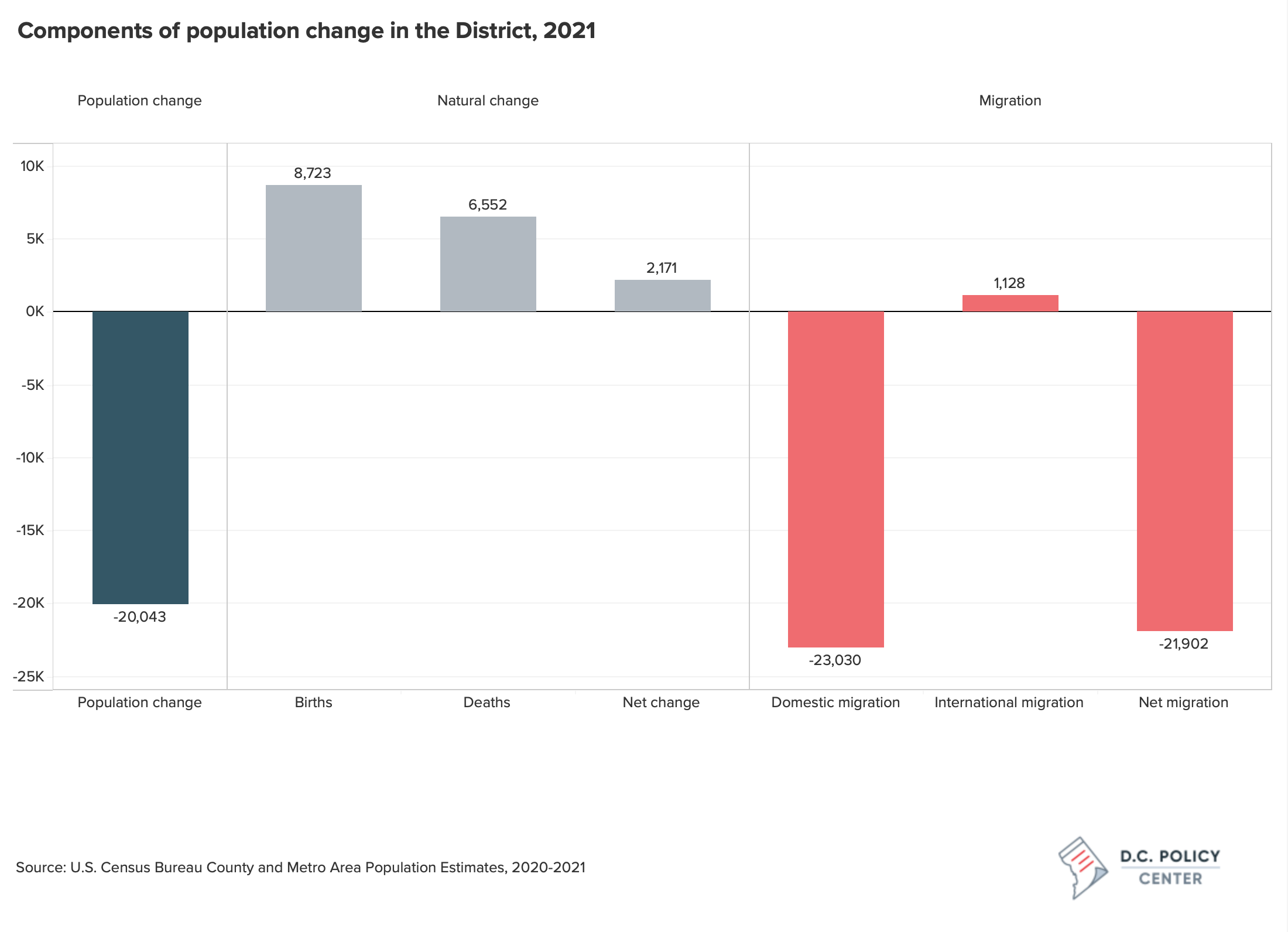According to data recently released by the U.S. Census Bureau, the District’s population fell by around 3 percent in 2021, to 690,093—a loss of 20,043 residents. Domestic out-migration, or people moving from D.C. to other parts of the country, is the primary source of this decline. While domestic out-migration has been underway since 2018, over 23,000 residents left the city in 2021, setting a record high for the last two decades.
The population growth rate of -2.9 percent is far lower than the national rate (0.12 percent), as well as that of Washington metropolitan area (0.46 percent). The District had the lowest rates of domestic and net migration among all states, and though its birth, international migration, and natural growth rates ranked second, third, and fourth respectively, those gains were not at all enough to compensate the losses.
It is important to note that the population estimates for D.C. were revised down significantly upon the completion of the 2020 Decennial Census, but these new estimates are not entirely free of problems. We now surmise from the revisions that District’s population never reached 712,000—as had been previously projected by the Census. But it is possible that the large undercount problems in the Decennial Census, combined with the low response rates in the 2020 American Community Survey, may be producing a population estimate that is not reliable.
But the same problems afflict all counties in the metropolitan area, so we used the newly-released Census data on components of population change across counties to identify trends.
Almost all core counties in the Washington metropolitan area saw population losses between 2020 and 2021
Compared to the larger metro area, D.C. had the lowest population growth rate of all 16 counties in the region, though eight others did suffer population declines. Between 2020 and 2021, Frederick and Stafford counties experienced the largest growth rates—over 2 percent—as well as the strongest rates of net in-migration relative to the size of the population. Only three other counties experienced positive net migration. While the District reported the largest absolute amount of domestic and net out-migration, Alexandria saw the residents leaving for other parts of the country at the highest rate.

D.C. fared relatively well in births, with the fourth highest birth rate in region, as well as the fourth highest absolute number. When taking into account deaths, however, D.C. fell in the bottom half of the region for rate of natural population change.
While Fairfax City saw the largest death rate in 2021, it also saw the strongest birth and natural growth rate. Overall, compared to the 10 most populous metropolitan areas in the country, the Washington metropolitan area fell in the middle of the pack for population growth, natural change, and net migration.

These trends support other research that suggests that demand for urban living is on the decline. Another D.C. Policy Center report showed that with shifting work practices following COVID-19, the District saw large numbers of young professionals leaving the city—a demographic group that has been a major driving force of population growth and strong fiscal health. An analysis of USPS data addressed the permanency of these moves and show a rebound, with the population recovering to pre-pandemic levels last summer. Though pandemic driven losses are likely coming to an end, there is a definite reversal in the District’s decade and a half long trend of big population growth.
